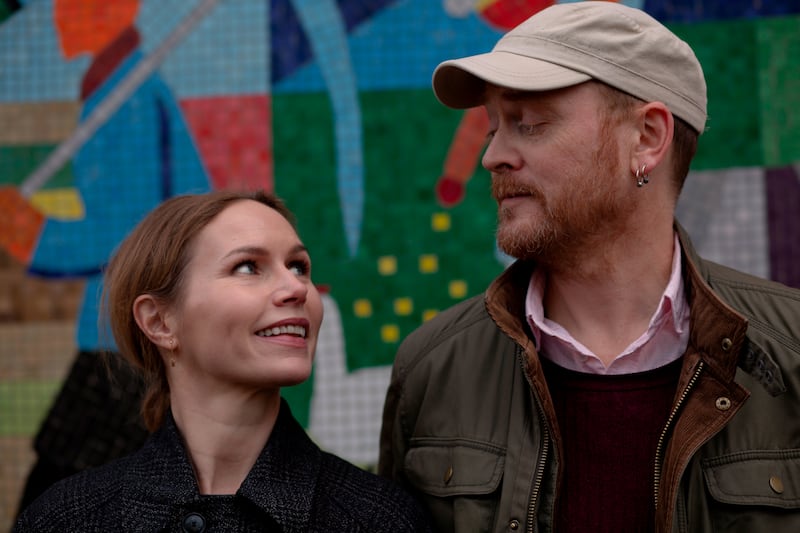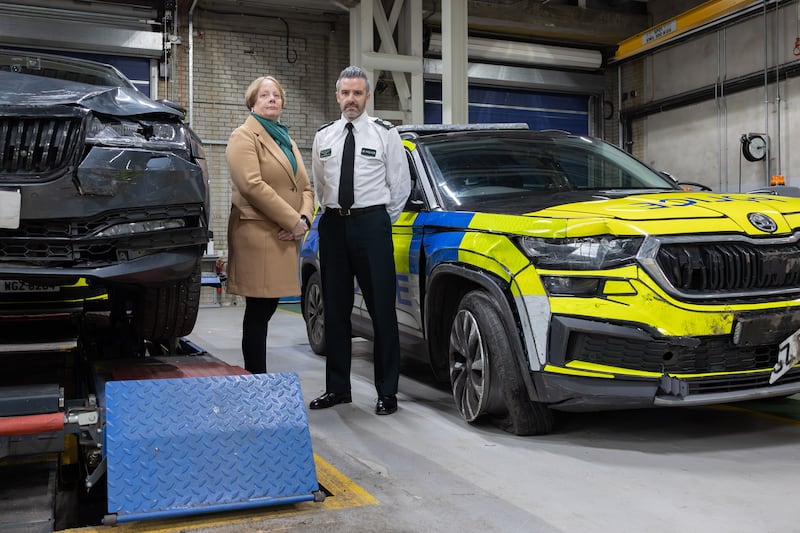Pairing a commercially successful female singer with a niche male songwriter and then wrapping the creative outcome in folksy improvisation won’t necessarily add to the coffers of any record label. Throw in an ensemble – The Second Hand Orchestra – featuring complementary, intuitive musicianship that doesn’t always stick to the rules and you have, equally, a result that might not rack up Spotify streams. Welcome, then, to the experimental world of James Yorkston and Nina Persson.
You know Persson as the former lead singer of the immensely successful Cardigans, a band she has little or no interest in recording or performing with again (in case you were wondering). The Swede is working on a range of projects – her participation with Yorkston sits side by side with singing jazz and teaching artistic development (alongside Sharin Foo of the Danish band The Raveonettes). “They needed more staff that were not academically trained, and Sharin convinced me to do it,” says Persson from her office in her home in Malmö.
You may also be aware of Yorkston, but only if you’re one of those people who like startled eyeballs looking up at them in their music soup. The Scottish songwriter and author has been signed to Domino Records, one of the UK’s most nurturing labels, for more than 20 years. “They may be different with acts of theirs such as Arctic Monkeys, which obviously bring in huge revenue streams, but they let me get on with whatever I want to do,” Yorkston says. When he told them he wanted to make the Great White Sea Eagle album with Persson, “they were as excited about it as they are with another of my side projects, Yorkston/Thorne/Khan – which, frankly, is a hard sell”. He recalls the last meeting he had with the label’s cofounder Laurence Bell. “He just said, ‘Don’t do less, do more.’”
Persson had more conventional experiences in The Cardigans, when the pressure was on to stay in the charts. But even when the band were at the height of their success, she says, “when the record companies had very high expectations for us to reproduce certain hit singles, we were still really good at being thick-headed and saying no, that we’d do it our way. Our requests were agreed to, so I’ve never felt inhibited creatively by that. It’s good to be a free agent and not to have someone breathing down your neck too much.”
READ MORE
The idea for working together on The Great White Sea Eagle emerged from Yorkston’s 2021 album, The Wide, Wide River, his first collaboration with The Second Hand Orchestra. There had, he admits, been no concrete plan to continue that creative relationship, but in early 2021, in his waterside studio during lockdown, he began to write songs on piano instead of guitar. He forwarded a handful of them to The Second Hand Orchestra’s leader, Karl-Jonas Winqvist, who then suggested they bring a friend of his along for the studio recordings and hope for the right kind of sparks to fly. Cue Persson.
When I was sent a couple of James’s new songs I instantly loved them and felt they were in tune with my musical tastes
— Persson on Yorkston
When Winqvist broached the idea with Persson of collaborating with Yorkston, what were her initial thoughts? Interested. Was she familiar with his music? No.
“How could I have missed him?” she says. “I regret that, but it’s never too late, because I work with him now. When I was sent a couple of James’s new songs I instantly loved them and felt they were in tune with my musical tastes, that they were something I could fit into. You can’t know everything by every artist, of course, but I sensed that if I had heard his music earlier I would have been a fan. It’s also good to like the music of someone who requests you to collaborate, because I’m always nervous to open up the sound files. I was nervous about James’s music because I hate turning things down, and I don’t like to not like music, but the songs were lovely. I had some wine before I listened to the songs, but then it was, Yes, these are good, I like them.”
“You just have to follow your interests,” Yorkston adds. “If that means working with the same people, and once the interest is there, then so be it. If your mind starts looking elsewhere, however, then sometimes it’s a good idea to follow the writing and music when they’re making suggestions to you, when it’s something you want to do. It’s a lot less stimulating when you feel you’ve been backed into a corner of feeling you have to do it again.”
‘It’s often hilarious’: James Yorkston on improvisation
“The full-band live shows are different every day, in that, while we stick to the songs, and while the songs are the same underneath, everyone plays different things. You never really know what’s going to happen, especially with the saxophonist and the guitar player, as they have a habit of steering things in a direction you might not have thought of. That’s quite anarchic, often hilarious, and as loose as it can possibly be.
“When it’s just Nina and myself doing a duo gig, it isn’t really improvising but more me making a mistake while playing the piano. During the recordings for the album, the musicians weren’t really told what to do; if anyone was unsure, then I would always give them hints and advice, explain what the song was about or what I would prefer to hear. Mostly, however, it was people sitting down, hearing the songs for the first time, having a few run-throughs, and then hitting the record button. The time we had in the studio was relatively short, so that focused everyone’s minds, but they were also buzzing to be there. It was a huge amount of fun.”
For Persson, it’s a relief not to be the primary focal point. “I’ve always liked to be in a collective, because a band format is basically what I grew up with. When you’re the lead singer, however, you’re sometimes physically removed from the rest of the people on stage, because, of course, they’re slightly behind you. You don’t get to feel the communality of the musicians. But what’s different with working with James and the ensemble is you certainly get to feel that. On occasion, I have time to be in the music while not necessarily on stage, and so I listen to what the other musicians are doing. It’s somewhere in between being a lead singer and backup singer; it’s nice to share the weight – and if it’s a good gig I just take all the honour myself!” And if it’s a bad gig? Yorkston butts in: “I have to load the equipment on to the van all by myself.”

Roadie duties aside, he agrees with Persson about the camaraderie you can get when working within a shared performance. While his solo work is just that, he says, with both Yorkston/Thorne/Khan and The Second Hand Orchestra he feels he is part of a small family. “One of the main aspects is that there’s a real feeling of sharing things with people, be it shows with a full band or – which happens now and again – as a duo with Nina. You all get to be part of the day, of course, but you also get to share the gigs, even the anticipation of where we’re going, creatively. Music can be such a beautiful thing, and an emotional thing, and when you get to share that it can be very special. Going on tour with a full band is like going on holiday with your pals, and then at night you get to show off a bit.”
The Great White Sea Eagle is released by Domino; James Yorkston, Nina Persson and The Second Hand Orchestra play the Set Theatre, Kilkenny, on Saturday, April 29th, as part of Kilkenny Roots Festival; Yorkston and Persson also perform at Liberty Hall, Dublin, on Thursday, July 27th



















